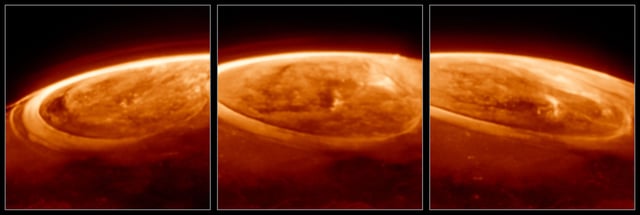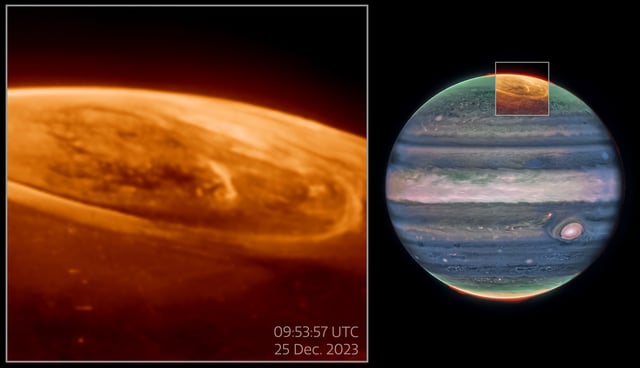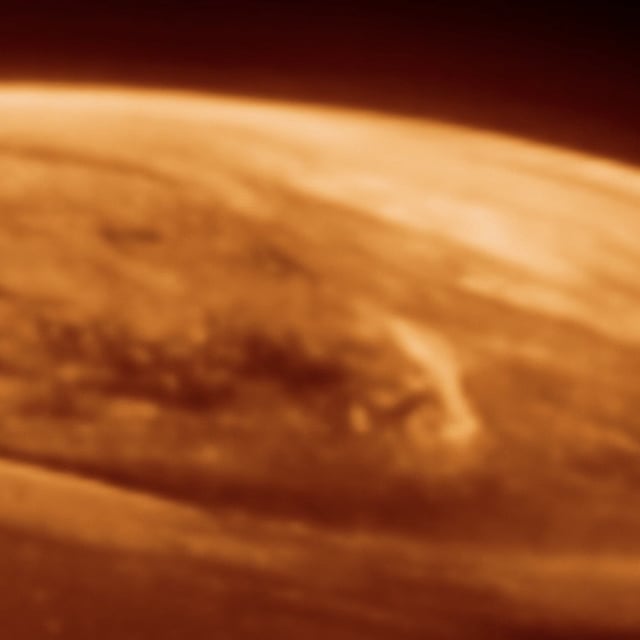Overview
- The James Webb Space Telescope captured unprecedented infrared details of Jupiter’s auroras, showing extreme brightness and rapid variability on timescales of seconds.
- Jupiter’s auroras are fueled by charged particles from both the solar wind and volcanic emissions from its moon Io, making them hundreds of times more energetic than Earth’s auroras.
- A bright auroral feature observed by Webb had no counterpart in simultaneous Hubble ultraviolet data, presenting an unexplained discrepancy in current magnetospheric models.
- The findings, published in Nature Communications, highlight variability in emissions from the trihydrogen ion (H3+), challenging previous assumptions about Jupiter’s atmospheric dynamics.
- Future research will involve additional Webb observations, comparative analysis with data from NASA’s Juno spacecraft, and preparatory studies for ESA’s JUICE mission to explore Jupiter and its icy moons.


